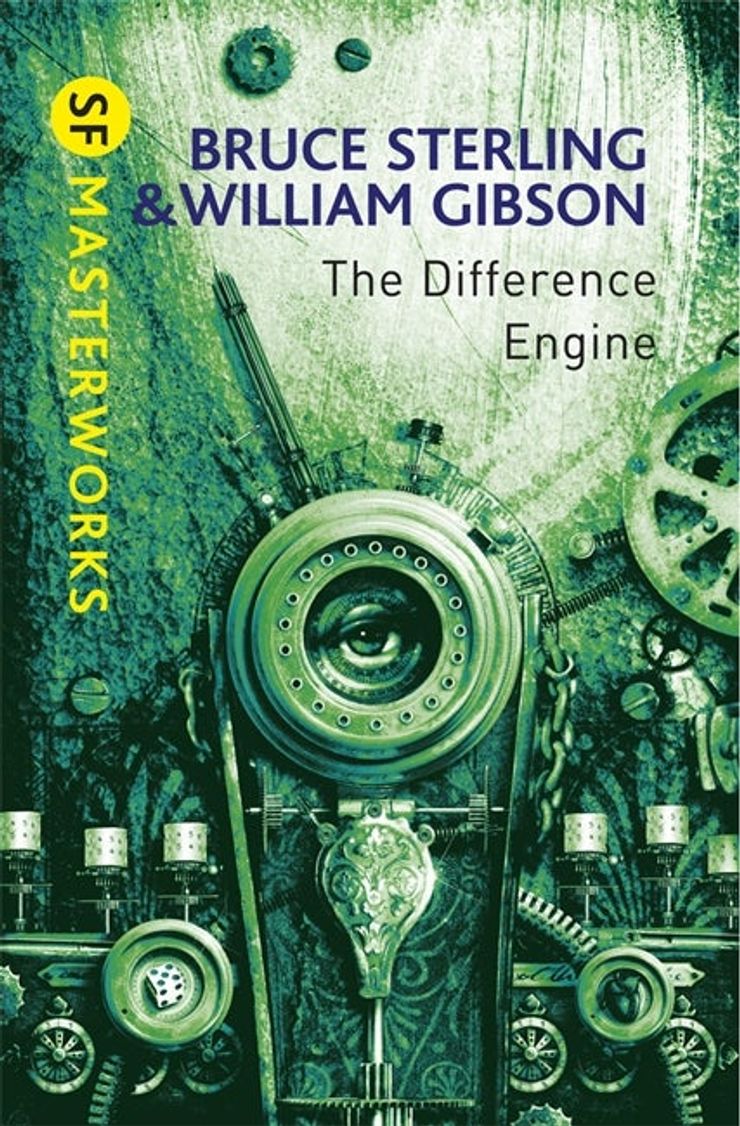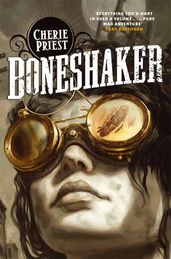The best steampunk books
From contemporary classics such as China Mieville and Cherie Priest to the origins of the genre in Tim Powers and K. W Jeter, discover our essential guide to the best steampunk books.

Steampunk is an inventive and eccentric genre mash-up of the future and the past, imagining that the steam-powered technology of the Victorian era far exceeded what was possible in reality. Steampunk has now developed into a thriving subculture, but it started with the first steampunk books. Here, Paul Roland, author of Steampunk: Back to the Future with the New Victorians shares his essential guide to the best steampunk novels.
Looking for fantasy? Read our edit of the best new fantasy books.
Looking for sci-fi? Read our edit of the best new science fiction books.
The Anubis Gates
by Tim Powers

This is what Hollywood executives call a ‘high concept’ novel. If it hadn’t been well-written it would still enthral as the idea is simply too strong to fail. Think Dan Brown, but with well-constructed sentences and pre-echoes of Roland Emmerich’s popcorn movie ‘Stargate’.
In 1801 a cabal of Egyptian High Priests invoke the ancient gods and unleash them on London to wreak havoc in the capital and bring the British Empire to its knees. But they succeed only in opening a phalanx of time portals which facilitate travel across time and space. With this intriguing premise in place the adventure can begin. The Egyptian magicians are pitted against a 20th century academic, Professor Brendan Doyle and a band of beggars who offer him shelter. There he befriends a girl who provides the obligatory romantic interest and forms an alliance with a body swapping werewolf. It reads like a mashup of ‘Raiders of the Lost Ark’, the ‘Hunchback of Notre Dame’ and the ‘Dr Who’ episode ‘Pyramids of Mars’, but Power’s blending of disparate elements brings the poets Byron and Coleridge into the mix, making for a far more cerebral adventure than the alchemical hotchpotch of ingredients might suggest.
Infernal Devices
by K.W Jeter (1987)
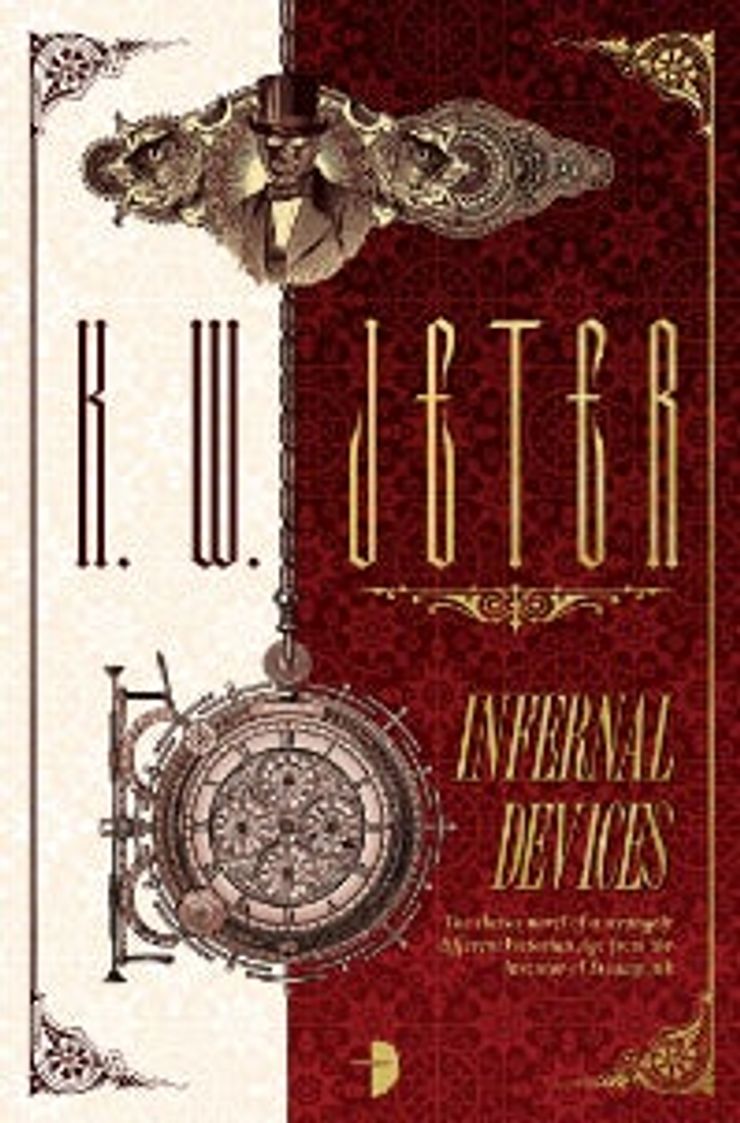
Those who prefer their steampunk novels ‘straight’ will find more to their liking in the macabre humour of Jeter’s ‘Infernal Devices’, a relentlessly inventive mystery which sets up and subverts the major tropes and themes that would all too soon become Steampunk conventions. On the surface it is a novel concerned with the minutia of machinery, specifically clockwork mechanisms which the narrator, George Dower the son of a watch maker, finds fascinating and intimidating at the same time, for he has inherited his late father’s workshop but not his craftsmanship or understanding and facility with the intricacies of these devices.
Though outwardly a gentleman of leisure, he is to all intents and purposes a forerunner of ourselves, a pleasure-seeker who desires increasingly sophisticated toys but hasn’t the patience to learn how they work, or how to repair them when they fail. But his one redeeming quality is his restless curiosity and so when a mysterious visitor entrusts George with the repair of a complex apparatus and pays him in an unfamiliar currency, our reluctant hero ventures outside the cosy familiarity of the shop to explore what lies behind the gay façade of gas lit London. Imagine the more off-the-wall episodes of ‘The Avengers’ and ‘Adam Adamant’ in a Victorian setting with clockwork automata standing in for the Cybernauts, deserted villages hiding sinister secrets and bizarre religious sects acting as a front for secret societies bent on overthrowing the establishment and you have something of the flavour of this deliciously entertaining book. However its artfulness, clutter of Victoriana and fantastic inventions are essential to the plot and not mere set dressing.
The Difference Engine
by Bruce Sterling & William Gibson (1991)
The Difference Engine outlines the iconography and ideology of the New World.
In the alternative reality brought vividly to life in The Difference Engine (1991), the 19th century mathematician Charles Babbage not only conceived the titular apparatus, a mechanical computer, but lived to build it and in doing so ushered in the information age in parallel with the industrial revolution. As a result, Victorian computer hackers known as clackers lead the Peelers a merry chase through a capital overrun with steam powered automobiles, while Prime Minister Byron and Lord Darwin preside over an Empire whose stability and prosperity is threatened by anti-technology luddites. On the side lines Disraeli pens lurid pulp fiction, having failed to enter politics. But while both the historical characters and their pop culture counterparts are sketched in broad strokes, several crucial plot elements are casually abandoned half way through and remain frustratingly unresolved.
The book has divided readers into those who were thoroughly immersed in its alternate history and those who strained to stay awake through the long dreary monologues in which palaeontologist Edward Mallory muses on his economic plight, the political situation in America (now a communist state) and the validity of his theory concerning the extinction of the dinosaurs. It is clearly the work of two quite diverse authors and the consensus appears to be that one of them might have benefited from the services of a good editor, but it is genre-defining work and an essential read.
Perdido Street Station
by China Miéville
Mieville's novel has a much, much wider scope than conventional Steampunk fiction. Strictly speaking, it falls into the New Weird category, being an ambitious mix of Mervyn Peake and Dickens with a dash of junkyard steam powered technology to explain how the futuristic city of New Crobuzon functions. It’s a masterclass in world building and one which Mieville constructed brick by brick from the ground up, unlike some gatecrashers to the Steampunk ball who simply assemble all the parts they imagine will look good but give no thought as to how their fantastic creation will function, or how to make the reader care what fate befalls it. In contrast, Perdido Street Station is no cosy escapist fantasy, but an unflinching look at a drug fuelled dystopian future that is almost voyeuristic at times as Mieville peels back the skin of this corrupt and sordid society as if dissecting one of its grotesque insect-like inhabitants. It will have your skin crawling and once inside your mind, the images will fester and haunt your dreams. The ultimate bad trip, but one that is, ironically, exquisitely described.
Winner of the August Derleth award, Perdido Street Station is an imaginative fantasy thriller, and the first of China Miéville's novels set in the world of Bas-Lag.
Boneshaker
by Cherie Priest
Sensing that Steampunk was in dire need of a magnum opus, Florida born Cherie Priest took leave from penning Gothic horror novels to hunker down over her laptop until she had produced an epic saga worthy of the name. ‘Boneshaker’ is a whopping page turner set in an alternative America of the 1880s where the Civil War is still raging. Taking advantage of the chaos and the early discovery of oil, smugglers plunder the natural resources of the old west and deal in narcotics just as their 20th century counterparts in organised crime have done in our world. Part of Seattle has become a no go area after a deadly gas was released during a boring exploration that went horribly wrong and there are rumours of ravenous flesh eating zombies scouring the ruins for anything edible on two legs. The protagonists in this bizarre saga are the wife and son of the inventor who was blamed for the disaster. Though aware of the dangers, the boy ventures into the sealed off section of the city in the hope of clearing his father’s name, forcing his mother to set off in hot pursuit in the obligatory airship. But these are merely the plot devices that drive the narrative. ‘Boneshaker’ is as much about a mother’s feelings for her son and the boy’s yearning to rescue and redeem his father as it is about the quest, or rite of passage undertaken by the characters.
It is also a beautifully written book. Just a couple of examples from the prologue gives a lie to the popular perception that Steampunk is only one step above pulp fiction:
‘In California there were nuggets the size of walnuts lying on the ground—or so it was said, and truth travels slowly when rumors have wings of gold.’
And ‘Gold came out of the ground in dust so fine that the men who mined it could’ve inhaled it.’
The Executioner's Heart
by George Mann
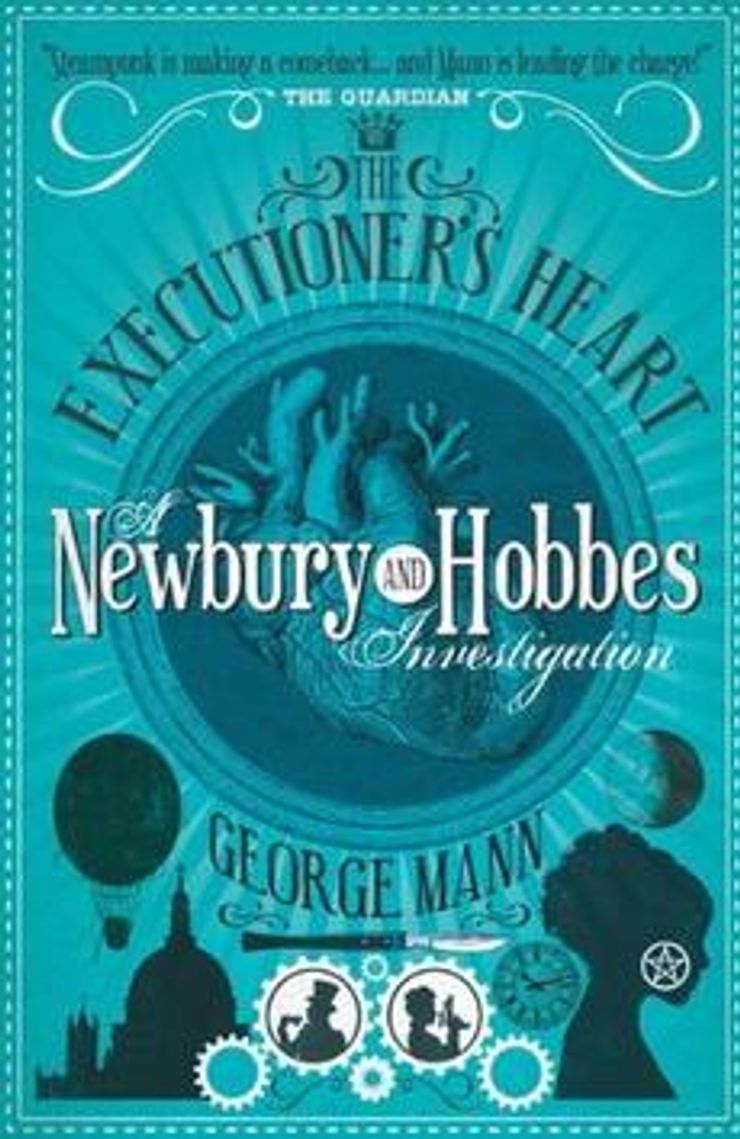
By the late Noughties Steampunk had graduated to the mainstream and the Frankfurt and London Book Fairs saw publishers scrambling for the rights to any Young Adult or SF steampunk novel featuring a feisty female in crinoline, or a leather corset brandishing a large automatic weapon as she stalked fog shrouded streets in search of supernatural prey.
An early edition of George Mann’s ‘The Affinity Bridge’ (2008) provided all the required ingredients and even boasted an airship on the cover to ensure book stores were in doubt as to which category it should be filed under. It also carried a quote from ‘The Guardian’, that bastion of English culture, declaring that Steampunk was making a comeback (!) and that “Mann is leading the charge”. Ignoring the hype and the fact that Steampunk hadn’t expired and therefore couldn’t make a comeback, ‘The Affinity Bridge’ and its five sequels beginning with ‘The Osiris Ritual’ (2009) and concluding with ‘The Executioner’s Heart’ (2013), could be said to be the culmination of Steampunk’s first flowering, if only because it brings together all the disparate elements in one breathlessly exhilarating adventure series.
Mann’s fictional detectives, Sir Maurice Newbury and his indomitable assistant Veronica Hobbes, are clearly modelled on John Steed and Emma Peel (with more than a nod to Mulder and Scully for those too young to remember the originals) and that same Sixties comic strip quality marks their investigation into the appearance of flesh eating revenants, the spectre of a Police Constable who won’t go quietly and a tragic airship disaster. Fortunately, their relationship remains purely professional, never congealing into cloying romance, or anything so icky. Which is just as well for Hobbes has her own investigation to follow on behalf of Queen Victoria and Newbury must go it alone until their paths and cases inevitably intersect with direst consequences for the villains and the obligatory hairbreadth escape for our heroes.
The Martian Ambassdor
by Alan Baker
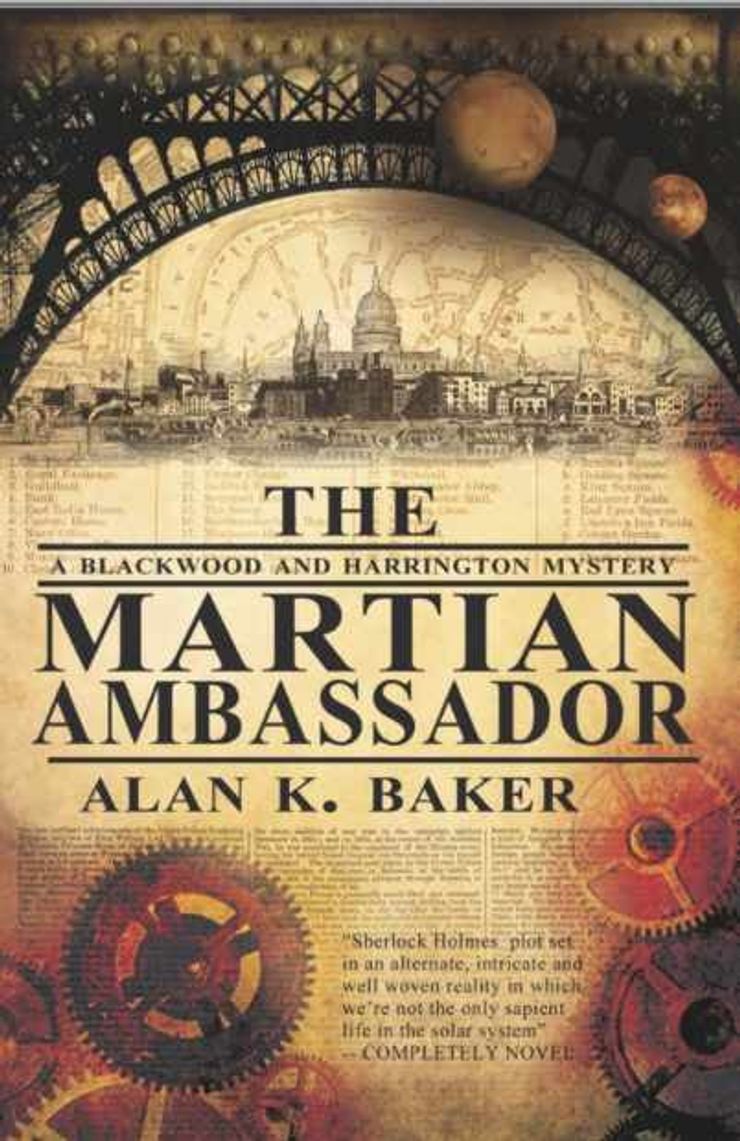
This sees another odd couple pitted against dastardly villains in a neo-Victorian setting. Special Investigator Thomas Blackwood is partnered with Lady Sophia Harrington to track down and unmask the evil villain behind the assassination of an alien diplomat, a crime which has strained relations between Earth and the Red Planet. Ever since the tripods landed on Horsell Common in 1899 as part of a fact finding mission, the Martians have been our allies and have generously shared their technology, enabling us to build ether powered airships and prototype computers or ‘cogitators’ as well as public transport operated by extra-terrestrial engineering.
These advances have kept London free of fog and accelerated innovation, but it has evidently not purged the capital of crime and the malevolent masterminds who seek to profit from a new ‘war of the worlds’.
While some may baulk at the appearance of fairies and their annoying ability to fix every problem by magic, it is only fair to point out that Conan Doyle championed the case of the Cottingholm fairies and so their presence in a Victorian fantasy which aims to mimic Wells and Doyle’s literary style is perfectly valid. Besides, where does it say that an author can’t amuse himself with his creations and have as much fun as his readers?
Johannes Cabal the Detective
by Jonathan L. Howard
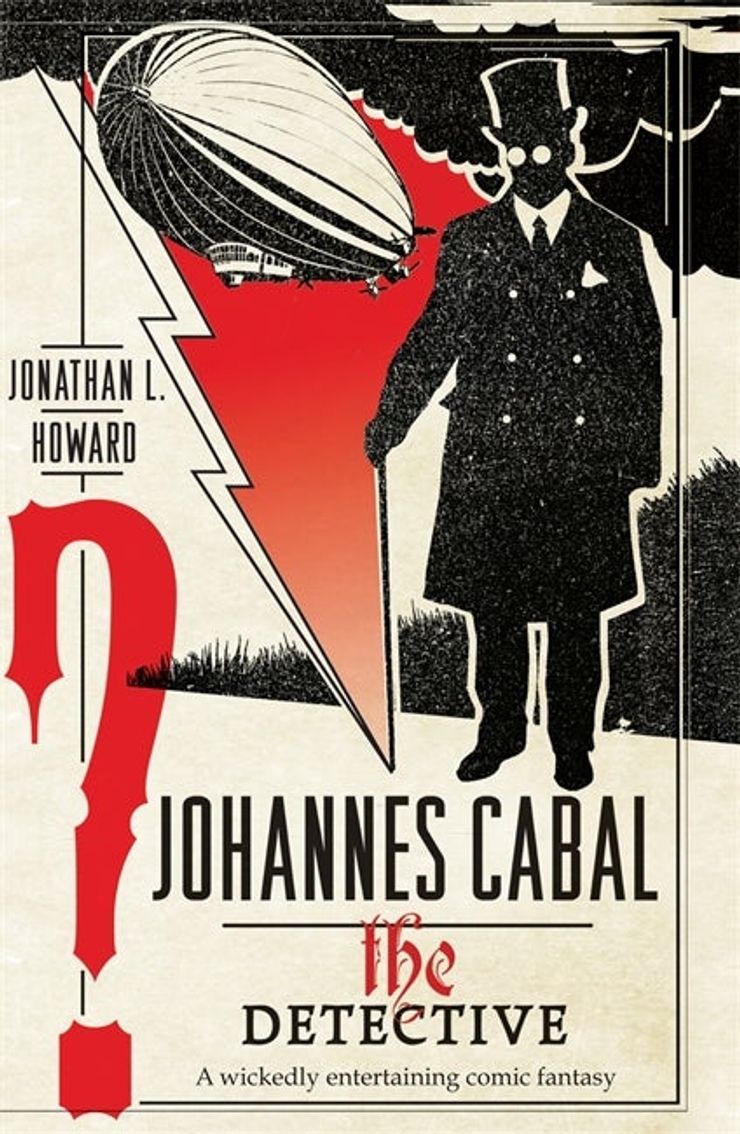
A similar whimsical tone is taken by Howard whose insouciant period pastiches feature his alter ego, Johannes Cabal, a suave aristocratic necromancer turned detective. Howard’s artful reimagining of an Edwardian England has anti-gravity airships traveling along ley lines, fantastic but unfeasible technology in everyday use and insect-like helicopters swarming the skies. It’s to Howard’s credit that his unprincipled rogue is also irresistibly charming despite routinely despatching hapless souls to his infernal master.
In the first book in the trilogy ‘Johannes Cabal The Necromancer’ (2010) our Faustian hero inhabits a dream world populated by witches and demons, but in the second book in the series ‘Johannes Cabal The Detective’ (2011) he saunters nonchalantly through a Steampunk universe where he finds himself embroiled in a political conspiracy and is forced to solve a classic locked room mystery on board an airship packed with the usual suspects. Fortunately our arrogant antihero has one up on Hercule Poirot – he can talk to the dead. Again there is an ‘Avengers’ style dynamic in the relationship between Cabal and his sidekick, Leonie Barrow, and a nod in the direction of ‘The Assassination Bureau’, the cult spy spoof staring Diana Rigg, which one suspects may have been the inspiration for this pacey period romp.
The Curious Case of the Clockwork Man
by Mark Hodder
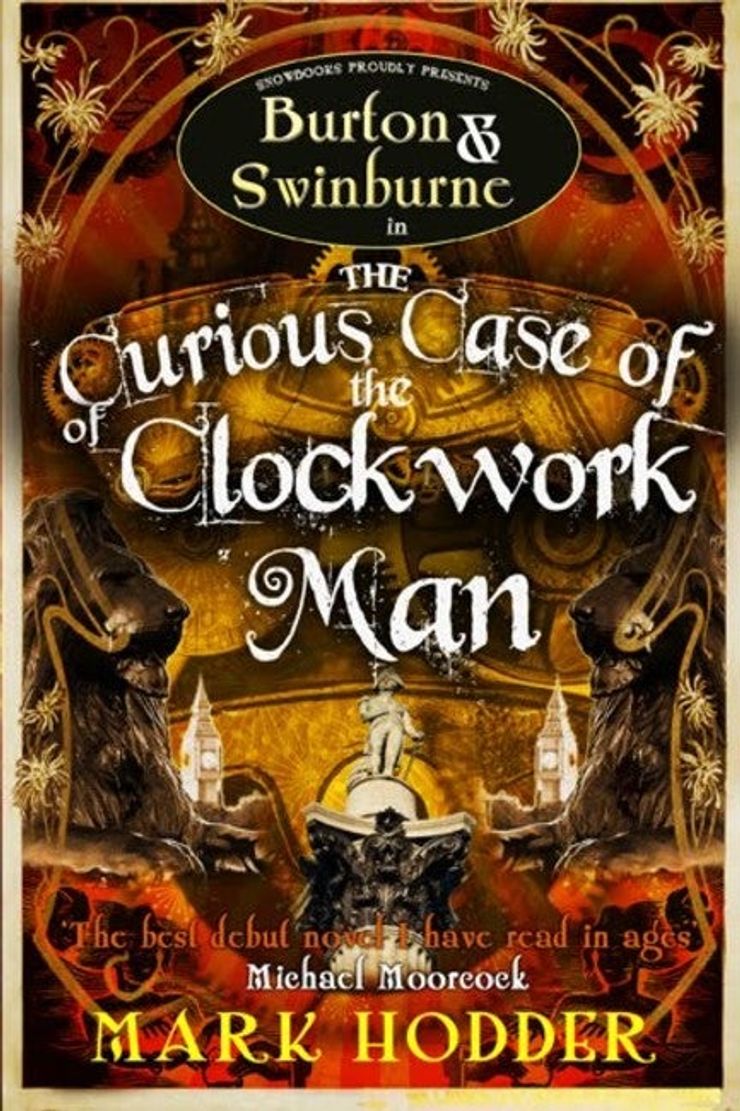
Hodder’s first foray into steampunk books, Burton and Swinburne in the Strange Affair of Spring Heeled Jack (2010), is crammed so full of incidental detail that its characters have barely room to swing a sword stick. The premise is a promising one – the investigation into the historical mystery that was Spring Heeled Jack by explorer Sir Richard Burton and his assistant Algernon Swinburne, the poet and libertine. Hodder has researched his subject thoroughly, but some critics complain the Steampunk elements are jemmied in with little thought as to how they might work or serve the plot. Suspension of belief is one thing, they say, but patently implausible science such as clockwork calculators implanted into the human brain and coal powered helicopters give the impression that the author is packing in every ingredient he can think of purely for effect. In fairness, Michael Moorcock thought it a hoot, and he’s a pretty good judge of fantastic fiction.
But The Curious Case of the Clockwork Man (2011) the second Burton-Swinburne adventure, the neo Victorian world and its wonders are more in keeping with the Steampunk aesthetic and include clockwork valets and omnibuses built from the carcases of giant insects. Add a séance and a trip to Bedlam and you have the makings of a novel shortlisted for the fun shelf.
Steampunk and Steampunk Reloaded
by Edited by Ann and Jeff VanderMeer
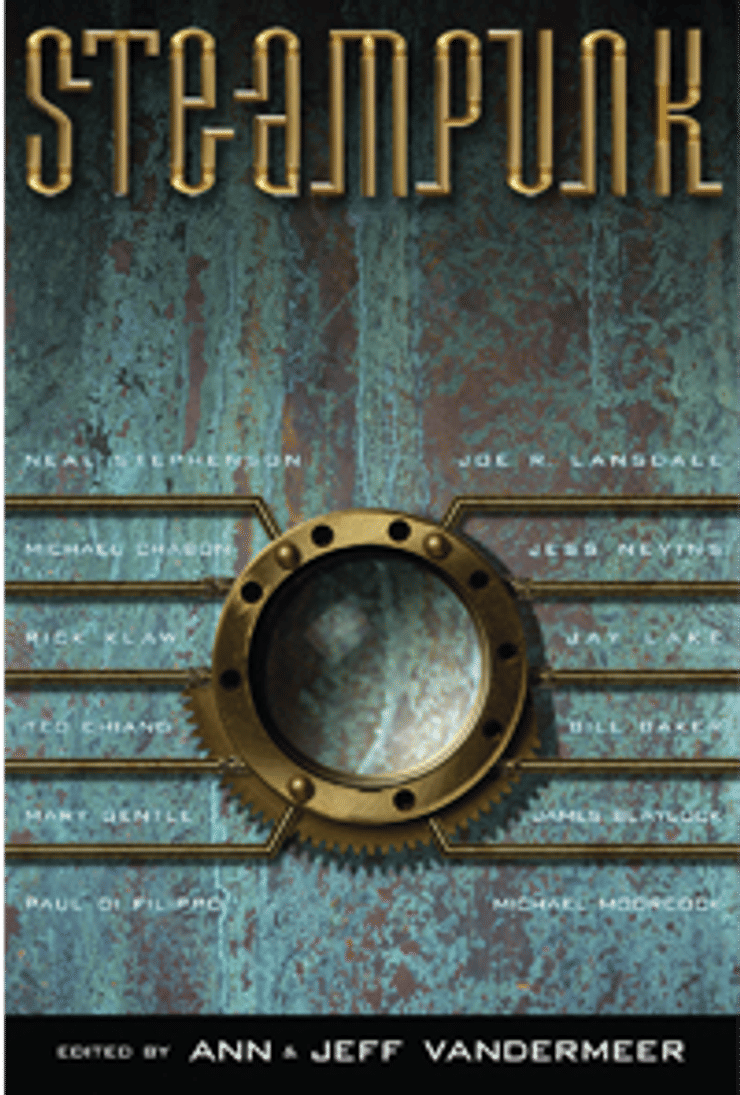
My final choice is an anthology and one of the best of the many that have been published to capitalise on the steampunk movement. The VanderMeer’s are leading lights in the SP community so their selections can be relied upon to satisfy even the most jaded SP reader. Extracts from Moorcock and Blaylock were presumably included to lure the newcomer and don’t do more than whet the appetite for more of the same, but there are top drawer stand-alone stories from Mary Gentle (‘A Sun In The Attic’), Ted Chiang (‘Seventy-Two Letters’) and Paul Di Filippo (‘Victoria’) in the first volume plus two excellent essays on the influence of SP in pop culture (‘The Steam-Driven Time Machine’) and SP in comics (‘The Essential Sequential Steampunk’).
The second collection casts its net wider to take in tales that might be described as only marginally SP, but that’s not such a bad thing if it allows the inclusion of William Gibson’s ‘The Gernsback Continuum’, Stephen Baxter’s ‘The Unblinking Eye’ and ‘The Unbecoming of Virgil Smythe’ by Ramsey Shehedeh). Vol 2 also boasts ‘Tanglefoot’, a short story from Cherie Priest that is grounded in her Clockwork Century world and excellent genre defining fiction from Jeffrey Ford (‘Dr Lash Remembers’), Daniel Abraham (‘The Adventure of the Emperor’s Vengence’) and G.D. Falksen (‘The Strange Case of Mr Salad Monday’) which must rank as some of the finest of their kind.
